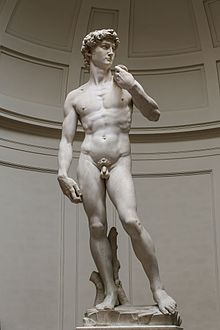Souvenir Sheet: Pin-up Art Silver Impressions (Central African Republic 2016)
Pin-up Art Silver Impressions (Central African Republic 2016)
01 January (Central African Republic ) within release Pin-up Art (2016) goes into circulation Souvenir Sheet Pin-up Art Silver Impressions face value 2,650 Central African CFA franc
| Souvenir Sheet Pin-up Art Silver Impressions in catalogues | |
|---|---|
| Colnect codes: | Col: CF 2016-355 |
Souvenir Sheet is square format.
"Limited issue" deluxe souvenir sheets like this based off the original productions by Stamperija were produced. This series taken from the Stamperija produced Pin-up Art series. Origins of the deluxe sheets is unclear. These counterfeit panes were never offered on the Stamperija website and were and are only offered by exclusive counterfeit distributors in Eastern Europe. These are not listed to exist in any catalog. The counterfeits have extreme differences in colors and the stamp images are "blurry" in comparison with the genuine stamps. These are claimed to be " limited UV cardboard" having "OFFICIAL" inscribed on the back which is seen under UV light. The inscription at the bottom translated is "Limited edition of 50 units". The whole series (both gold and silver) have been extensively sold by Eastern European and Russian sellers. They are still offered to this day by several exclusive Eastern European and Russian counterfeit distributors who are asking overinflated prices. Anyone selling these should be avoided!Also in the issue Pin-up Art (2016):
- Souvenir Sheet - Pin-up Art Gold Impressions face value 750;
- Souvenir Sheet - Pin-up Art Gold Impressions face value 750;
- Souvenir Sheet - Pin-up Art Gold Impressions face value 750;
- Souvenir Sheet - Pin-up Art Gold Impressions face value 750;
- Souvenir Sheet - Pin-up Art Gold Impressions face value 2,650;
- Souvenir Sheet - Pin-up Art Silver Impressions face value 750;
- Souvenir Sheet - Pin-up Art Silver Impressions face value 750;
- Souvenir Sheet - Pin-up Art Silver Impressions face value 750;
- Souvenir Sheet - Pin-up Art Silver Impressions face value 750;
- Souvenir Sheet - Pin-up Art Silver Impressions face value 2,650;
Souvenir Sheet Pin-up Art Silver Impressions it reflects the thematic directions:
Art is a diverse range of human activities in creating visual, auditory or performing artifacts (artworks), expressing the author's imaginative or technical skill, intended to be appreciated for their beauty or emotional power. In their most general form these activities include the production of works of art, the criticism of art, the study of the history of art, and the aesthetic dissemination of art. The oldest documented forms of art are visual arts, which include creation of images or objects in fields including painting, sculpture, printmaking, photography, and other visual media. Architecture is often included as one of the visual arts; however, like the decorative arts, or advertising, it involves the creation of objects where the practical considerations of use are essential—in a way that they usually are not in a painting, for example. Music, theatre, film, dance, and other performing arts, as well as literature and other media such as interactive media, are included in a broader definition of art or the arts. Until the 17th century, art referred to any skill or mastery and was not differentiated from crafts or sciences. In modern usage after the 17th century, where aesthetic considerations are paramount, the fine arts are separated and distinguished from acquired skills in general, such as the decorative or applied arts.
The nude, as a form of visual art that focuses on the unclothed human figure, is an enduring tradition in Western art. It was a preoccupation of Ancient Greek art, and after a semi-dormant period in the Middle Ages returned to a central position with the Renaissance. Unclothed figures often also play a part in other types of art, such as history painting, including allegorical and religious art, portraiture, or the decorative arts. From prehistory to the earliest civilizations, nude female figures were generally understood to be symbols of fertility or well-being.
Painting is the practice of applying paint, pigment, color or other medium to a solid surface (support base). The medium is commonly applied to the base with a brush, but other implements, such as knives, sponges, and airbrushes, can be used. Painting is a mode of creative expression, and the forms are numerous. Drawing, gesture (as in gestural painting), composition, narration (as in narrative art), or abstraction (as in abstract art), among other aesthetic modes, may serve to manifest the expressive and conceptual intention of the practitioner. Paintings can be naturalistic and representational (as in a still life or landscape painting), photographic, abstract, narrative, symbolistic (as in Symbolist art), emotive (as in Expressionism), or political in nature (as in Artivism). A portion of the history of painting in both Eastern and Western art is dominated by spiritual motifs and ideas. Examples of this kind of painting range from artwork depicting mythological figures on pottery, to Biblical scenes rendered on the interior walls and ceiling of the Sistine Chapel, to scenes from the life of Buddha or other images of Eastern religious origin. In art, the term painting describes both the act and the result of the action. The support for paintings includes such surfaces as walls, paper, canvas, wood, glass, lacquer, clay, leaf, copper and concrete, and the painting may incorporate multiple other materials including sand, clay, paper, plaster, gold leaf, as well as objects. The term painting is also used outside of art as a common trade among craftsmen and builders.



